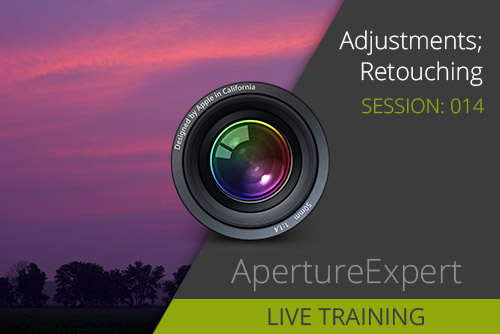ApertureExpert Live Training Session 016: Edge Sharpen, Chromatic Aberration & Color Monochrome
By PhotoJoseph
March 7, 2012 - 11:29am
Adjustments; Edge Sharpen, Chromatic Aberration, Color Monochrome
Live Training Session 016
This is the seventh video in a long series about Adjustments in Aperture 3, covering Dodge & Burn, but more importantly, explaining how brushes work.
Duration: 00:55 hr
Included with membership
ApertureExpert Live Training Session 016: Adjustments; you tell me!
By PhotoJoseph
March 3, 2012 - 9:59am
ApertureExpert Live Training Session 015: Adjustments; Dodge & Burn Available Now
By PhotoJoseph
February 25, 2012 - 11:56am
Adjustments; Dodge & Burn (and how brushes work)
Live Training Session 015
This is the seventh video in a long series about Adjustments in Aperture 3, covering Dodge & Burn, but more importantly, explaining how brushes work.
Duration: 01:04 hr
Included with membership
ApertureExpert Live Training Session 015: Adjustments; Dodge & Burn Scheduled
By PhotoJoseph
February 19, 2012 - 4:32am
ApertureExpert Live Training Session 014: Adjustments; Retouching Available Now
By PhotoJoseph
February 14, 2012 - 8:39am
Adjustments; Retouching
Live Training Session 014
This is the sixth video in a long series about Adjustments in Aperture 3, exclusively about the Retouching tool.
Duration: 00:55 hr
Included with membership




